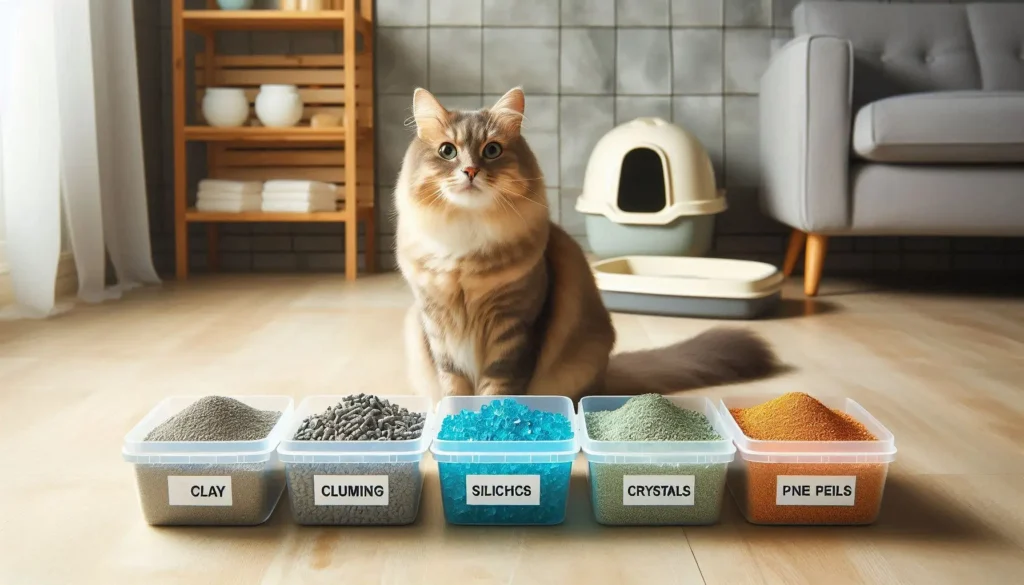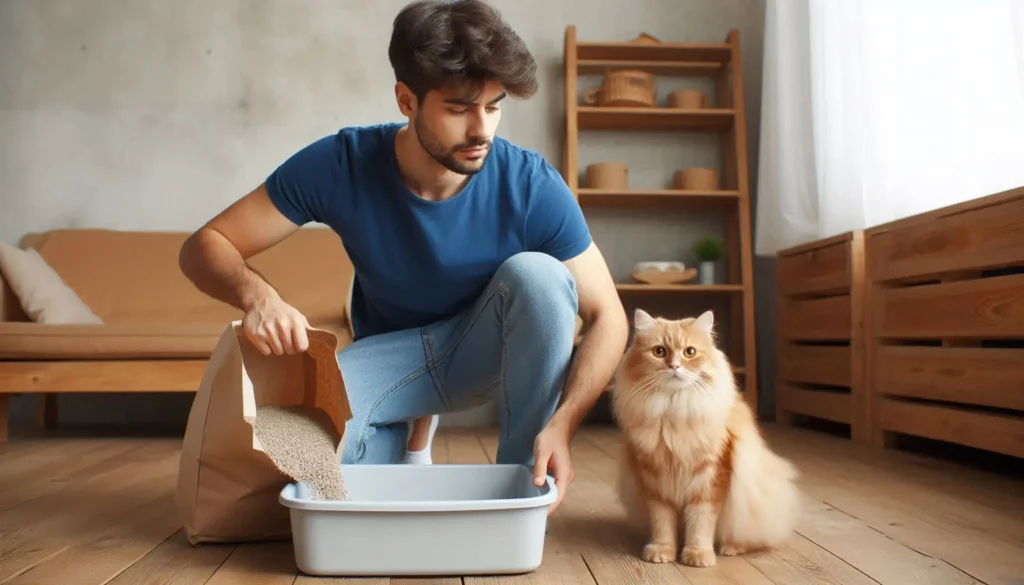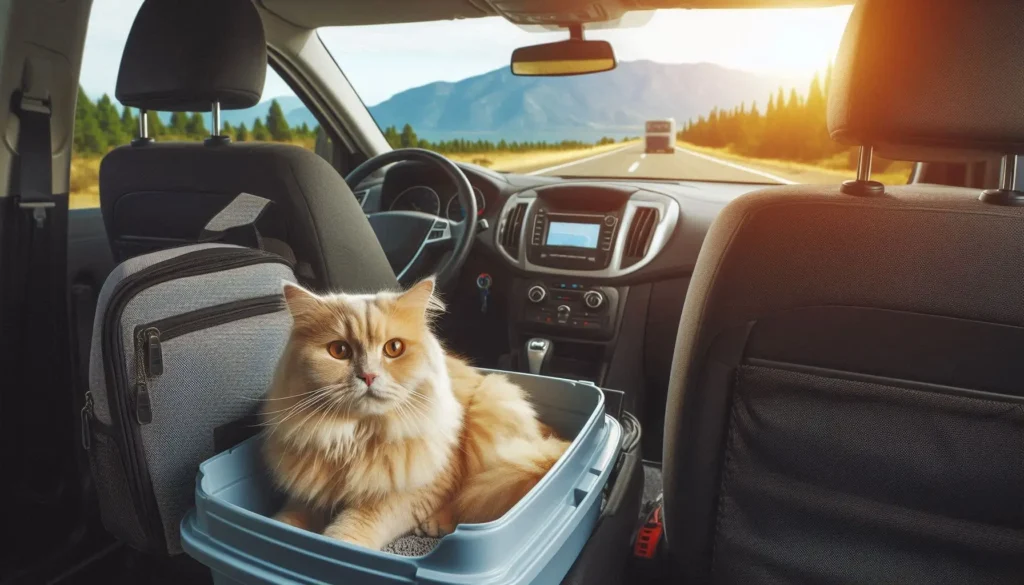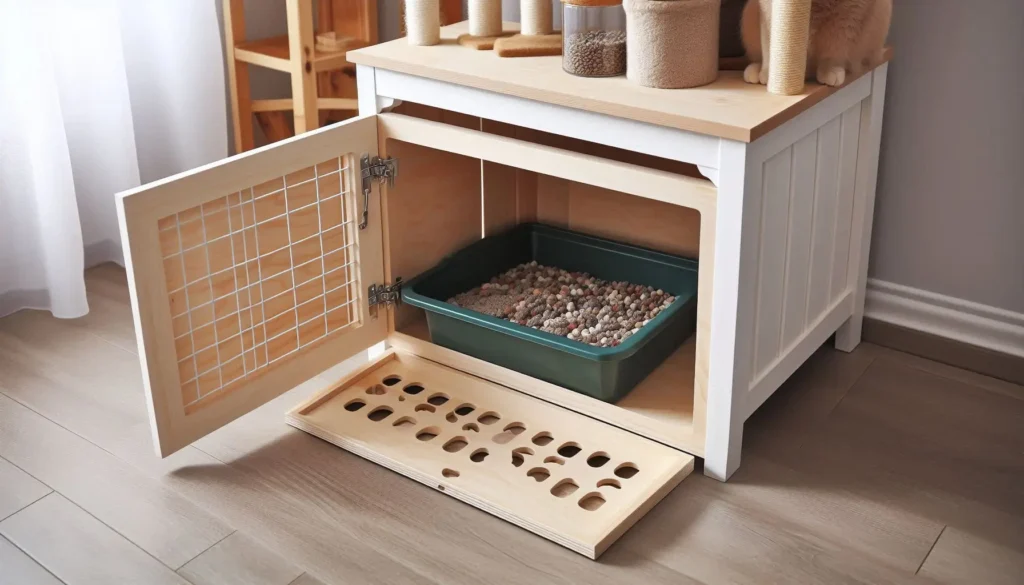Where To Put The Cat Litter Box? 3 Important Things To Consider
We independently research, review, and recommend the best products—If you buy something through our links, we may earn an affiliate commission.
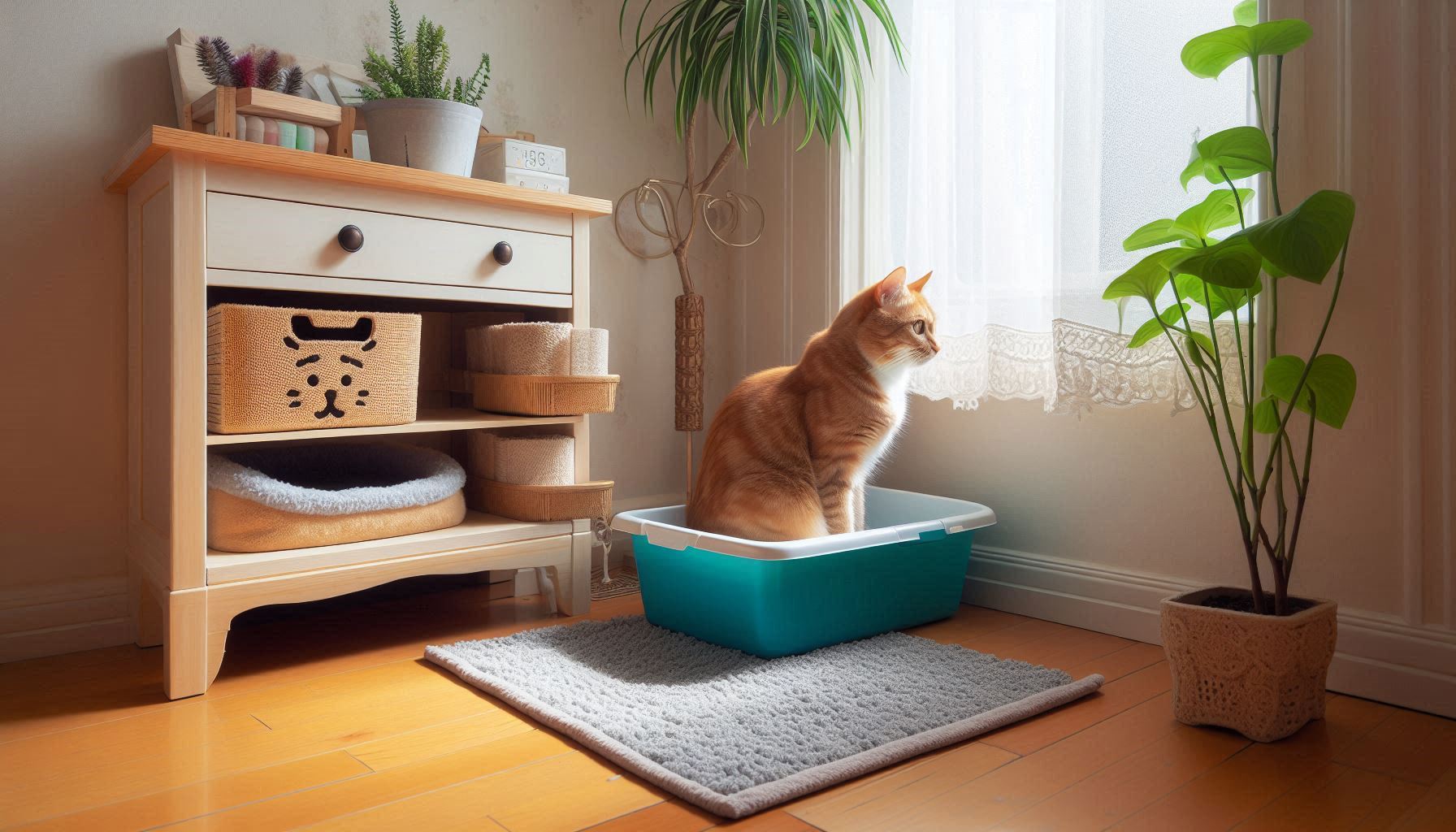
In order to keep our furry companions happy, we need to keep their best interests in mind. And the perfect location of the litter box is a major one. A brain-wracking question for most of us, with a clear answer, actually:
A cat’s litter box is its sanitary haven. So, it’s crucial that it be placed in a spot that is comfortable, accessible, and easy to find for your feline friend.
Where to put the cat litter box?
Here are three main ingredients to consider when choosing the perfect spot for your cat’s litter box:
- Put the litter box in a quiet, private corner.
- Make sure it’s accessible to your cats.
- Keep it far away from their food and bed.
1. Choose a quiet private corner
First and foremost, it should be in a quiet, low-traffic area where your cat can have privacy while using their litter box. This will help them feel more comfortable. It will also reduce the likelihood of them avoiding the litter box altogether.
2. Make sure the litter box is easy to access in and out
Another important factor is accessibility. The litter box should be accessible to your cat, with no obstacles or barriers in the way. This means it should be placed in an area where they can easily find it. Also, make sure there are no loose objects around that can fall while they’re around.
3. Keep it away from their sleeping & eating space
Out of respect for our furry friends, the litter box should stay far away from their sleeping area. And yours too; the litter box smell is rarely pleasant.
Not to mention their eating spot as well. No one likes to poop next to where they eat.
Final Note
Keep in mind that the location of the litter box can affect a cat’s willingness to use it. Which can impact their overall health and well-being. So, when choosing a spot for your new cat’s litter box, one should consider all the factors above.
This will require you to test and try different spots at your house until you find the Purrfect arrangement for you and your fluffy companion.

Frequently Asked Questions
According to the 2022 ISFM/AAFP Cat Friendly Veterinary Environment Guidelines published in the Journal of Feline Medicine and Surgery, the litter box should be 1.5 times the length of your cat from the nose to the tip of the tail. Whereas the width should be equivalent to your cat’s length, the tail is not included. A cat that is about 18 inches long needs a litter box that measures 27” long by 18″ wide. A litter box that most likely doesn’t exist out there. That is why it is best to select the largest and nicest litter box for your beloved cats.
It is recommended that you use a maximum of 2 inches to 4 inches of litter in your litter box. If there are numerous cats using the litter box, you’ll need 3 to 4 inches of litter to absorb all that urine and clump around.
In fact, anything less than 2 inches will cause unpleasant odors to develop as well as a high probability of inappropriate elimination. On the other hand, too much litter will lead to a mess since most cats will simply kick it outside.
Research was conducted and published in the Journal of Feline Medicine and Surgery regarding this subject. The results showed that out of 28 different cats, 4 showed a preference for covered litter boxes and 4 for open litter boxes. The rest of the cats were happy to use any type of box they provided as long as it was well-cleaned.
This only shows that our cats have unique preferences, and only by getting to know them will we be able to fulfill their needs in the best way possible.
If you have one cat at home, you’ll most likely need to change clumping cat litter every 2–3 weeks. However, if you’re using a non-clumping litter, you’ll have to change the litter completely twice a week.
If you have an automatic litter box, you can perform a deep cleaning once a month. Unless, of course, there is a problem of feces scattering or building up inside the litter box. You will need to clean it more often in that case.
If you have a manual litter box, the litter should be scooped and cleaned at least twice a day.
